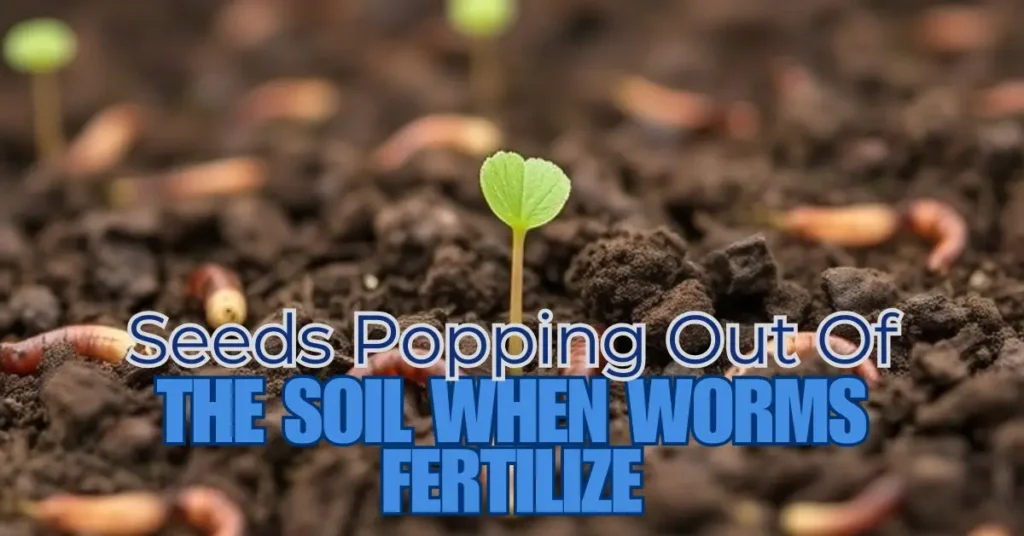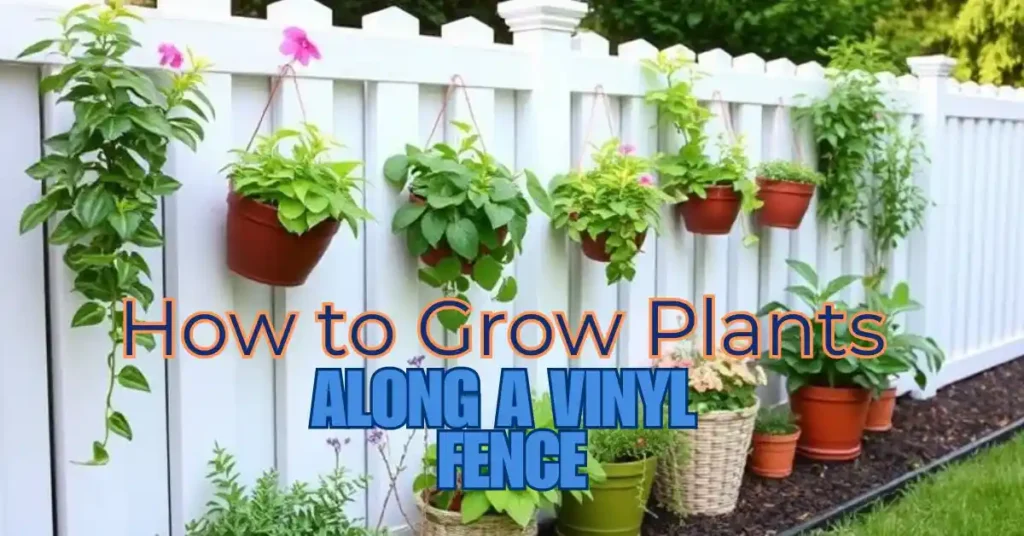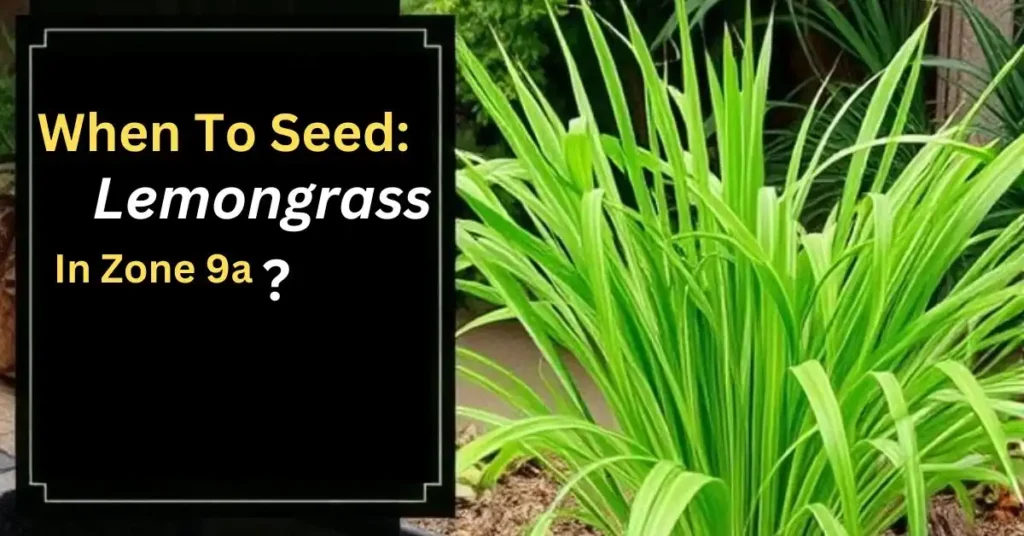When worms fertilize the soil, many gardeners often notice seeds popping out of the ground. This happens because worms play a crucial role in enhancing the soil environment for plant growth. They break down organic matter, adding important nutrients back into the soil, which improves its health.
These nutrients are essential for the growth of plants and seeds, but the interaction between worms and soil can sometimes cause the seeds to shift and even emerge from the soil’s surface. This is often seen in bulk soil areas where there is little disturbance, but the role of worms in fertilizing and enhancing the soil makes the surface unstable for seed development.
To better understand what’s happening, it’s important to consider the soil’s condition. When worms move through the soil, they store and mix the fertilisers, which may affect the growth and placement of the seeds. This often leads to a situation where seeds don’t stay in place and end up popping out.
It’s a natural process that can also be influenced by factors like moisture, temperature, and how safely the soil is managed. Therefore, it’s crucial for any gardener to monitor the soil’s health and consider the tips for keeping it stable, so seeds stay properly buried for ideal growth.
Key Points
| Key Concept | Explanation |
| Cause | Worms fertilize the soil and can cause seeds to pop out if planted too shallow. |
| Soil Conditions | If the soil is loose, disturbed, or lacks proper cover, it may not support seed germination well. |
| Seed Growth | As the emerging seedling grows, its roots push downwards and the shoot pushes upwards, exerting force that can push the seed out of the soil. |
| Seed Swelling | When seeds absorb water, they swell, which can make them rise up to the surface if they’re planted too shallow. |
| Germination Process | The growth of the seedling relies on a stable environment, with the roots anchoring downward and the shoots growing upward. Improper depth can dislodge the seed. |
| Prevention | To prevent seeds from popping out, ensure proper planting depth, keep the soil moist but not overly wet, and re-bury gently if seeds start to surface. |
| Worms’ Role | Worms enhance the soil by aerating and providing important nutrients, but if seeds are not deep enough, their activity can disturb the soil and cause seeds to move. |
| Moisture Levels | Consistent moisture helps seeds stay in place and successfully germinate while preventing excessive drying or swelling. |
| Proper Care | Follow planting instructions carefully, and adjust depth or watering techniques based on the specific seed variety you’re working with. |
Seeds Popping Out of Soil When Worm Fertilize Ftb
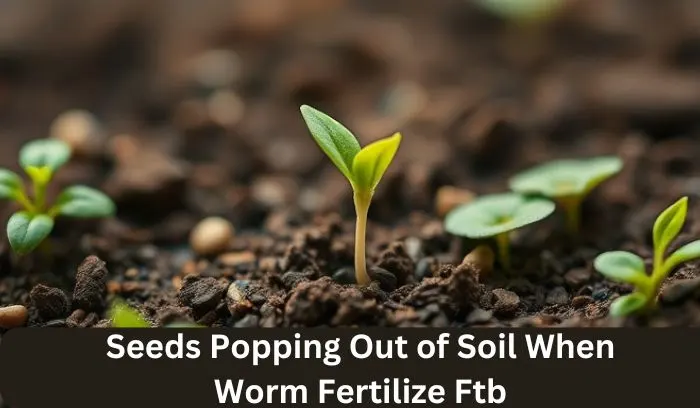
1. Presentation to the Environment
The world we live in is a complex biological system that thrives in idealised concordance. At the heart of this system lies the soil, an energetic environment full of living beings that help support the growth of plant life. Among these life forms, night crawlers play an essential role.
These unsung heroes help sustain and improve the soil, making it more prolific and ready for seeds to sprout. As seeds remain torpid in the soil, waiting for the right conditions, the exchange between worms and the soil creates a captivating story beneath the surface.
Worms enhance the soil by breaking down organic matter, turning it into nutrient-rich castings that are crucial for plant development. This natural process helps provide the supplements necessary for plants to flourish.
By balancing moisture, temperature, and nutrients, worms create the ideal conditions for germination, contributing to the natural preparation that supports the delicate association of all components in the environment. The mechanics of this process are a beautiful example of nature’s complexity, where each piece plays a role in supporting the interconnecting web of life.
2. The Worm’s Part in Soil Wellbeing
Earthworms as Nature’s Cultivators
Earthworms are often called nature’s cultivators, playing a vital part in soil wellbeing. They work beneath the surface, burrowing through the ground, which creates channels that allow for better air circulation and water development. This process improves the soil structure, making it easier for plants to grow.
The supplements and moisture they help move through the soil support root advancement, creating a better environment for seed development. Their worm castings are rich in nitrogen, phosphorus, and potassium, often called black gold by gardeners because they significantly enhance soil fertility.
Enhancing Soil and Plant Growth
Additionally, earthworms help break down natural matter, turning it into accessible nutrients. This process is key to the Fertilizer Transmission Bond (FTB), which ensures that the soil is rich in nutrients essential for plant growth. Their burrowing not only improves seepage but also helps with dampness maintenance, making the soil more resilient.
Through their actions, earthworms support the microbial life in the soil, creating an energetic environment that fosters seed germination and a thriving biological system. As players in the circle of life, they help sustain a healthy, productive environment that benefits both plants and animals.
3. Understanding the Fertilizer Transmission Bond (FTB)
The Role of Night Crawlers in Soil Health
The Fertilizer Transmission Bond (FTB) is a vital concept that highlights the symbiotic relationship between night crawlers, soil wellbeing, and plant growth. These biological forms work continuously to improve soil health by breaking down natural matter into nutrient-rich castings. This process provides the essential supplements plants need for seed germination and development.
The nutrients released from the castings act as a natural flag, signaling torpid seeds to stir, enabling them to sprout when the conditions are right. By improving soil fertility, night crawlers contribute significantly to microbial movement, creating a healthy environment where plants can thrive.
How FTB Influences Ecosystem Health
In addition to improving soil richness, the Fertilizer Transmission Bond plays an integral part in the biological system of the soil. Night crawlers support the microbial action, which creates an energetic environment where seeds can flourish. T
his interconnected relationship between soil fertility and plant development emphasizes the importance of ideal conditions for growth. By influencing the microbial movement and enhancing the web of life, worms contribute to the sustainability of agricultural practices and the health of ecosystems, showing how small organisms like worms are pivotal for the long-term health of our planet.
4. Seeds in Torpidity: Holding up for Enactment
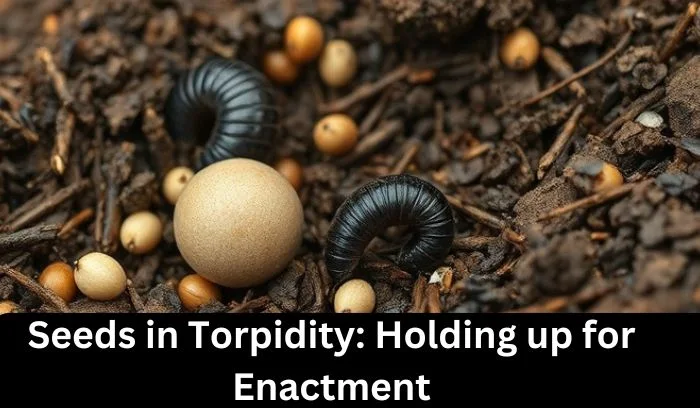
Seeds often lie in a state of torpidity, waiting for the right conditions to begin their journey toward life. This state of dormancy helps with their survival until the environment is favorable for them to stir and start germination.
During this time, they are protected by defensive shells, which shield them from harsh environmental conditions. The moment the conditions, such as warmth, moisture, and temperature, align, the seed breaks free from its shell, ready to grow.
The activation process is closely linked to the health of the soil, and the role of night crawlers is vital in creating the nutrient-rich soil needed for seed development. Their nutrient-rich castings provide essential supplements, like nitrogen, which trigger physiological changes in the seeds.
This combination of favorable natural conditions and soil enrichment creates an ideal situation for seeds to flourish and grow into thriving life forms. This transformation is a beautiful example of nature’s magnificence, where every component of the biological system plays a role in ensuring the success of new life.
5. The Fertilization Prepare
The fertilization process carried out by worms is a remarkable and essential part of the biological system. As worms move through the soil, they break down organic matter like leaves, decaying plants, and other organic debris, turning them into valuable nutrients for plants.
This recycling helps maintain the cycle of life by enriching the soil with nutrients. During digestion, worms convert complex organic compounds into simpler forms that are easier for plants to absorb. The castings are filled with a valuable combination of nitrogen, phosphorus, potassium, and other vital micronutrients that are essential for promoting plant growth.
The timing of this process is vital. Worms fertilize the soil just when dormant seeds are ready to wake from their torpidity. As worms release nutrients, they create an environment perfect for seed germination. The combination of optimal moisture levels, warmer temperatures, and the release of nutrients triggers the metabolic processes within the seeds.
Worms also help improve soil structure by tunneling through the soil, which enhances air circulation, allowing water to reach deeper layers. This keeps the soil from becoming waterlogged, which can harm root health. The result is the pinnacle moment when seeds begin to sprout, as green shoots emerge, bringing the fertilization process full circle.
6. Seeds Reacting to Fertilization
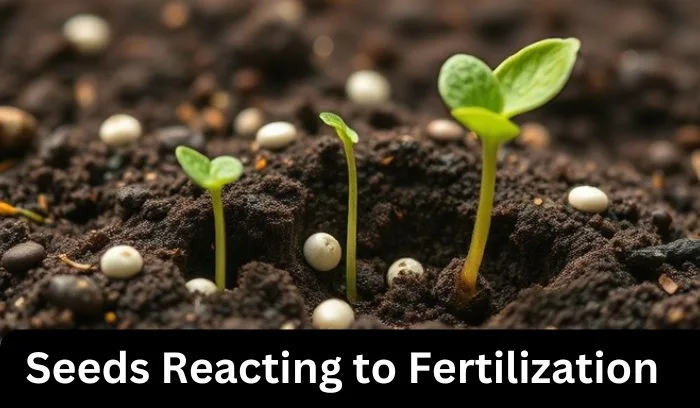
When seeds are fertilized, they react with surprising energy and begin their life cycle. This process starts as they move from a torpid state to one full of potential. As worm fertilize FTB releases supplements from worm castings, these nutrients trigger important physiological changes in the seeds.
Chemicals and hormones are activated, leading to biochemical responses that spark germination. The presence of nitrogen, in particular, plays a critical role in boosting protein synthesis and cell division, both key to the seed’s growth.
As the seeds take in the supplements from the improved soil, they start to develop roots that anchor them and help them absorb water and nutrients. The shoots then grow upward, seeking the sunlight to fuel further development.
This transition, from dormant to active, is a reflection of nature’s magnificence, where life forms emerge, thrive, and contribute to the cycle of life. Each seed that sprouts is a testament to the strength and vitality that exists within nature, destined to grow into a strong plant that will continue to prosper in the environment.
7. Breaking Through the Soil
When a seedling breaks through the soil, it signifies an important milestone in the plant’s life cycle. It’s not just about breaking through the surface; it symbolizes the perfection of countless forms working in harmony. As the shoot pushes its way upward, it faces many challenges, such as haziness, compacted soil, and the weight of the surrounding earth.
However, with the help of supplements from worm castings and moisture, the seedling continues its rise, showing incredible versatility and resilience in nature.
This process is not only about the growth of a single plant but the restoration of the entire environment. As the seedling moves overground, it reaches for sunlight, which powers photosynthesis, giving it the energy it needs to continue its growth and development.
This interaction between plants, sunlight, and moisture creates a dynamic system, fueling the entire ecosystem. Through this process, the seedling supports biodiversity, providing shade and contributing to the overall balance of life forms within the environment.
8. Worm and Seed Collaboration
The relationship between worms and seeds is a powerful example of coexistence in the natural world. Worms help create a fertile soil environment that is vital for seed germination and plant development. As worms break down natural matter, they enrich the soil with castings, which are packed with supplements.
These supplements make it easier for seeds to absorb the food they need to grow and flourish. This process is part of a larger biological system, where every element plays a role in the interconnecting cycles of life. The energy generated by this collaboration benefits the ecosystem by supporting microbial life and maintaining soil health.
This partnership extends beyond merely supplying nourishment for the seeds. The worms improve the structure of the soil, allowing roots to reach deeper into the soil for water and nutrients. As worms continue to fertilize the soil, they create a balanced environment, essential for life to thrive.
Without the worms, seeds would struggle to break free from torpidity and may not have the chance to flourish. This ongoing interaction between worms and seeds is a perfect example of nature’s wisdom in action, where the participation of each living form ensures the overall health of the ecosystem.
See Also: When to Seed Lemongrass in Zone 9a? A Complete Guide
9. Change of the Scene
As seeds begin to sprout and seedlings start to develop, the entire environment undergoes a remarkable change. What was once a desolate patch of soil slowly transforms into a dynamic landscape, filled with greenery and the wonder of new life.
The presence of worms helps fertilize the ground, enhancing the soil with nourishment that supports biodiversity. This change is not just visual; it’s the beginning of a new chapter where species begin to flourish, contributing to a healthier, more interconnected ecosystem.
As seedlings mature, they bring life and vegetation that provide cover and food for insects, birds, and other wildlife. This interdependency among all living beings creates a rich, thriving community. The cycle of life continues, with each generation contributing to the well-being of the ecosystem.
Over time, natural changes and the resilience of this process improve soil health, air quality, and even carbon sequestration, ensuring that future generations of plants and species can prosper and maintain balance in the biological system of nature.
What are the benefits of fertilization in plants?
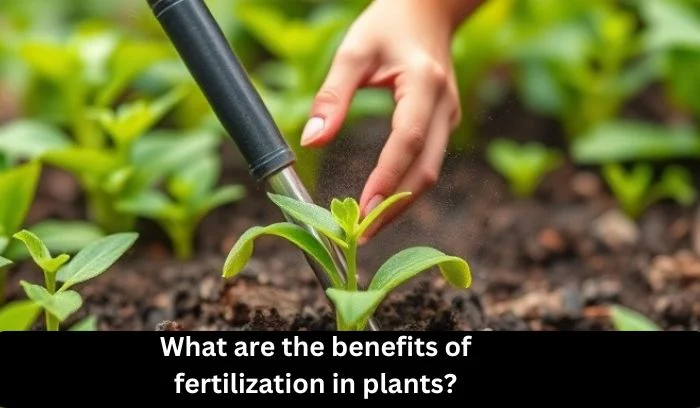
Fertilization is essential for maintaining the health of plants and trees. When plants are nutrient-deficient, they become more susceptible to various problems, especially disease and pest infestations.
By adding the right nutrients, fertilization helps prevent these issues from occurring, ensuring that your plants stay strong and vibrant. Proper nutrients provide the support needed for plants to grow healthy, which in turn makes them more resilient to environmental stress and harmful pests.
When plants receive the necessary nutrients, they are less likely to face the harmful effects of being weak or unhealthy. A well-fed plant is better equipped to fight off pests and diseases, which might otherwise invade when the plant is not strong enough to defend itself. By taking proactive steps in fertilization, you can avoid future issues, and enjoy healthy, thriving plants all year long.
Why do earthworms come out of the soil when?
Earthworms need air to survive, which is usually abundant in healthy soil. However, during a temperate spring season, when there is heavy rain and snow melt, the ground can become waterlogged.
This happens when the water fills up the spaces in the soil, making it difficult for oxygen to diffuse through the water quickly enough. Without enough oxygen, earthworms are at risk of drowning. In order to breathe and meet their survival need, they come up from the ground.
The earthworms leave the soil to find a safer place with better access to air. It’s fascinating to witness how they instinctively know when the soil conditions are unsafe for them. When waterlogged soil limits their ability to get enough oxygen, they emerge to find fresh air, ensuring they can continue to thrive.
advantages and disadvantages of earthworms in soil
Disadvantages
- Damage to natural ecosystems, especially when they are non-native.
- Disrupt the balance of forest ecosystems by altering the soil structure.
- Turn soil into dry granules, making it inhospitable to understory plants.
- Reduce the growth of tree seedlings, hindering natural forest regeneration.
- Speed up leaching, causing water and nutrients to wash away, reducing soil fertility.
- Reduce the organic matter layer, which is essential for maintaining soil health.
- Lead to the disappearance of wildflowers and other plants that depend on a stable environment.
Advantages
- Earthworms enhance soil structure by facilitating aeration, which improves air circulation and drainage.
- Their activity makes it easier for plant roots to grow and access necessary nutrients.
- Earthworms consume organic matter, which enriches the soil and boosts its overall quality.
- They help increase fertility by breaking down organic material and releasing nutrients.
- Earthworms also chelate minerals, making them more available for plant absorption.
- They stimulate microbial activity and support beneficial populations, like nitrogen-fixing bacteria, improving soil health.
- Earthworms serve as a biological indicator of soil health and fertility.
Practical Tips for Gardeners
For gardeners looking to maximize the benefits of worm fertilizer, it’s essential to focus on the right balance of nutrients and microorganisms. Using high-quality worm castings can significantly improve soil fertility, aiding in seed germination and overall plant health.
Make sure to apply the castings evenly across the soil surface to avoid creating localized nutrient concentrations. This ensures that all seeds benefit from the enhanced soil conditions and can grow optimally.
Regularly monitoring your soil is important to ensure moisture levels are consistent, as irrigation practices can directly affect seed growth. Over-application of worm fertilizer can cause imbalances in the nutrients available to plants, so it’s important to follow the recommended application rates. Periodic soil testing helps track nutrient levels and ensures soil management is on point. Making informed decisions based on this data will keep your garden thriving and healthy.
Why Do Seeds Pop Out?
When seeds are planted too shallow, they may not have enough cover from the soil to stay properly buried. As the emerging seedling begins to grow, it uses its natural force of growth to push the seed upwards.
This often happens when the soil is loose or disturbed, causing the seed to pop out instead of remaining where it was originally buried. The germination process requires that seeds be at the correct planting depth so that their roots can grow downwards and the shoot can grow upwards.
One common reason seeds pop out is seed swelling. As the seed absorbs water, it swells and may push itself out if it was planted too close to the surface. To prevent this, it’s important to press the seed back into the soil and re-bury gently if it pops out. Following planting instructions and ensuring the soil’s moisture levels are consistent will help seeds germinate successfully and stay in place during their early growth stages.
See Also: How to Grow Plants Along a Vinyl Fence: Step-by-Step Guide
What Causes Seeds to Pop Out of the Soil?
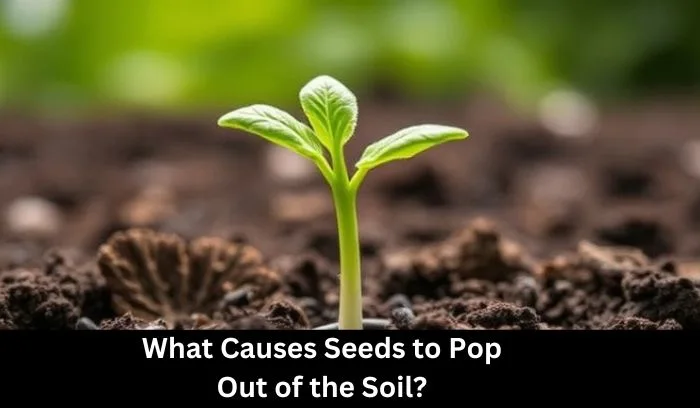
When seeds are planted too shallow, the emerging seedling may push the seed out of the soil. This happens due to the natural force of growth, especially if the soil is loose or disturbed. Without enough cover, the seed struggles to stay buried and properly germinate. The proper planting depth is key, as it ensures the seed has enough soil to stay in place while germinating.
Another factor is seed swelling. When a seed absorbs water, it swells, which can push it slightly out of the soil, particularly if it’s planted close to the surface. During the germination process, the roots push downwards and the shoot pushes upwards, exerting force that may dislodge the seed if it isn’t properly buried. If you notice seeds popping out, you can re-bury gently and press them back into the soil. It’s important to adjust planting depth and ensure consistent moisture levels for the seeds to germinate successfully.
Common Misconceptions About Worms and Seeds
Many people believe that worms can regenerate into two full worms if they are cut in half. While it’s true that a worm can regenerate lost tissue, the half with the head can survive, but the other half will die.
Another common misconception is that worms are always good for the soil. In reality, some worms can be invasive, causing environmental damage. They can compete with fungi, mix and rearrange leaf litter, and even eat seeds, which can harm the seed bank and future regeneration of plants.
Furthermore, people often think that worm castings are always beneficial for plants, helping them germinate. While castings can retain moisture and support seed growth, worms can also harm the forests by compacting duff and top soil. Finally, it’s important to know that worms are invertebrates, meaning they don’t have bones, contrary to some beliefs. Understanding these facts can help us appreciate the role of worms more accurately.
FAQs
Yes, worms will eat seeds and nuts over time as they decompose. Anything organic that can decompose becomes worm food, and this process doesn’t cause any problems.
Worms release casts that are rich in nitrogen and phosphorus, making them readily available for plants. Their bodies decompose rapidly, contributing to the nitrogen content in the soil. New Zealand research shows worm casts release four times more phosphorus than surface soil, improving soil fertility and promoting plant growth.
When worms burrow through the soil, their movement can unintentionally push seeds closer to the surface or even cause them to pop out completely. This happens as worms ingest and expel soil particles. This natural process helps with seed dispersal and can aid germination for certain plants, improving their chances of growth.
To prevent worms in the soil, avoid overwatering as earthworms thrive in moist conditions. Minimize organic matter like leaf litter and mulch, which provide their food source. Using raised beds or containers with coarser, less soil creates a less hospitable environment for worms.
Worms, particularly earthworms, are beneficial for seed germination. Their castings improve soil quality by adding nutrients and microbes, creating a more favorable environment for seeds to sprout and grow. This helps increase germination rates and boosts seedling vigor, leading to healthier, more robust plants.
Conclusion – The Circle of Life
The circle of life is like an embroidered artwork where all the interconnecting life forms play vital roles in maintaining nature and its strength. As we observe the journey from torpid seeds to prospering plants, we see how complicated forms come together to support our environments.
The phrase “worm fertilize FTB” highlights the cycle of life and biodiversity, where worms help enhance soil health, allowing seeds to sprout and flourish. In this relationship, each element — from living beings to soil — is essential for wellbeing and sustaining life. The expression of life is a confirmation that animals, even the resolute worms, have an important role in awakening dormant seeds, helping them develop and fill the spaces in nature that others rely on.
This complexity shows how nature’s biological systems are interconnected, able to adjust to changing conditions. Each small part, no matter how seemingly insignificant, contributes to the magnificence of the world and the future of our planet.
Through reflection, we gain a better understanding of the significance of these sensitive adjustments, and with the steps we take to secure and protect the systems around us, we can Ensure that life thrives and continues to prosper for future generations. The commitments we make today shape the effect on the planet and will influence the future in ways we are only beginning to understand.

